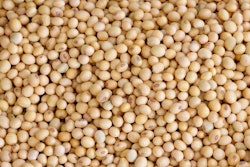
How technology, integration and regulations are reshaping US feed production
There were originally no less than three feed mills in Forest Lake, an old railroad town in eastern Minnesota. But times have changed. The last mill, known as E. J. Houle’s Feed Mill, closed its doors earlier this year.
The mill had been in the Houle family for three generations, according to Gary Houle, the company’s final owner. Over the years, they have watched industry trends come and go. The mill’s business boomed in the 1950s alongside the growth of the area turkey industry; that was gone by the 1970s. Eventually, the demand for pet food supplanted products intended for production agriculture.
In recent years, a new trend has begun to emerge. While the overall feed industry continues to enjoy steady growth, the number of feed mills in operation in the U.S. fell by 11% between 2015-2017, according to a study by CoBank.
Market forces, industry analysts say, are likely to push mills further down one of two bifurcated paths. Commercial feed companies will continue to build bigger, more sophisticated mills focused on reducing manufacturing costs, while smaller independent mills run the opposite direction, focusing on increasingly specific markets. Some already serve a single farm.
 The Houle family poses in front of their feed mill’s shipping dock. Gary Houle, the mill’s final owner, decided to close the company this year due to the difficulty of finding a successor. Otherwise, he says, the business was doing well, serving a growing market driven by local hobby farms. (Courtesy Houle’s Feed Mill)
The Houle family poses in front of their feed mill’s shipping dock. Gary Houle, the mill’s final owner, decided to close the company this year due to the difficulty of finding a successor. Otherwise, he says, the business was doing well, serving a growing market driven by local hobby farms. (Courtesy Houle’s Feed Mill)Changes in agriculture
This consolidation in the feed industry mirrors larger trends in agriculture, according to Tanner Ehmke, who oversees industry research at CoBank.
“Demand from the livestock sector is growing and changing as well,” Ehmke says. “We’re seeing this trend toward bigger and bigger farms.”
Not too long ago, he says, a dairy might consist of 50 cows. Now, a farm with 300 cows is considered small. “So, as we continue to see an evolution in the livestock sector, they’re going to need larger orders of feed, and if you’re a small mill, that’s going to be harder.”
Like farms, feed mills are “continually getting larger and larger because of the efficiencies to be gained,” according to Charles Stark, the Jim and Carol Brown Professor in Feed Technology at Kansas State University. Even the scale of the equipment has changed, he says — where in the 1980s, an 8-ton mixer was considered standard, now 12 tons is the new average.
Feed mills are also increasingly turning toward automation to reduce labor costs, which may in time result in fewer jobs in the feed industry.
“All of agriculture is becoming more capital intensive, rather than labor intensive,” Ehmke says.
Meanwhile, the 2011 passage of the Food Safety Modernization Act “really steps on the gas for consolidation,” Ehmke says. Just keeping up with the paperwork required by FSMA is a full-time job, increasing labor costs. In some cases, mills are choosing to close because they can’t afford to make required upgrades to their facilities.
Rise of the hobbyist
At the same time, a new kind of feed customer is emerging, Ehmke says — hobbyists who are raising livestock to “return to the land.” Many of these customers have horses, chickens, goats or perhaps some 4H animals for the kids.
Because they aren’t looking to make a profit raising animals, the price point for selling to hobby farms is higher, Ehmke says — high enough it may make up the difference for mills that learn to tailor their services to this new market, which demands quality customer service and diverse feed offerings rather than scale.
As with the rest of agriculture, Ehmke says, the feed industry is likely to lose its “middle.” Large feed companies that cater to production agriculture will continue to build larger, more state-of-the-art feed mills, while smaller mills carve out a new niche.
“It’s going to be very customer-driven,” he says, “and customers are going to increasingly fall into one of two categories — they want price, which requires scale, or they want service. … We have to satisfy customer needs, and it’s going to change the look and feel of the industry. You have to adapt or die.”
Growth, consolidation on the horizon
Ehmke anticipates that feed industry consolidation could intensify in the year to come, as FSMA takes full effect and the nation’s smallest mills are forced to decide between compliance and costly upgrades.
“This year is going to be where the rubber meets the road,” he says. “2020 is going to be very telling.”
But the long-term, the industry faces a positive outlook, Stark says.
While recent years may have seen an uptick in mill closures, Stark points out that the losses span only a handful of years and it’s difficult to compare data on feed mill numbers before and after FSMA began requiring mill registration.
The overall trend, he says, is growth. “It seems like the industry is continually building new feed mills.”
Much of the growth, Stark says, may be attributed to the same factors that have led to the closure of many small and independent feed mills across the country, with commercial feed companies running toward scale and smaller mills headed toward customer service and even full-on customization.
Stark says that since the 1980s, an entirely new business model has emerged in the feed industry, with independent facilities producing bulk orders of custom feeds milled to the customer’s specifications.
Many farms today, Stark says, have a nutritionist on staff whose knowledge of the species and the exact genetics on the farm means they know exactly what kind of feed the animals need and when. Instead of producing their own product line, small mills may produce custom feeds for perhaps a half-dozen clients.
As commercial companies grow larger, the small mills, Stark says, are getting smaller, with some farms opting to outright buy or build a dedicated mill to meet their needs. This is particularly common among swine producers, which CoBank identified as a key driver of growth in the feed industry.
This means there are options for small mills worried about their ability to compete with larger companies — whether they want to reinvent themselves or whether they prefer to exit the industry entirely.
“There is an opportunity there for those who are looking for it,” Ehmke says. “The future is going to be different from what we have had in the past, but that goes back to your deal on change — do you see change as a threat or an opportunity?”
Trouble finding new management
With succession planning proving problematic for feed mills as well as farmers, many mills are opting to sell or shut down entirely, while they’re still ahead, Ehmke says.
This was the case for E. J. Houle’s Feed Mill in Minnesota. The mill’s business has actually grown in the past ten years thanks to a growing contingent of hobby farmers, whom owner Houle strove to serve.
“Many of the traditional farms were sold,” Houle says, “but fortunately for us instead of dairy farms, they became horse farms, if you will. That business continued to expand, and we were very fortunate to have a large suburban, rural base of customers. Instead of 15 to 20 dairy farms, we had 300 to 500 customers raising horses or chickens or small pig operations.
Business, Houle says, had been better than in the past 10 years — better, even, than previous decades. But whereas Houle’s father purchased the business from his grandfather, the family has grown to where dividing the business among 17 grandchildren became financially untenable.
“It’s time to exit, so we have to sell,” says Houle, who is 75. “There was not a financial reason to close. There was a financial reason to stay open. If I were 50, I would be overjoyed at the potential that is here.”












